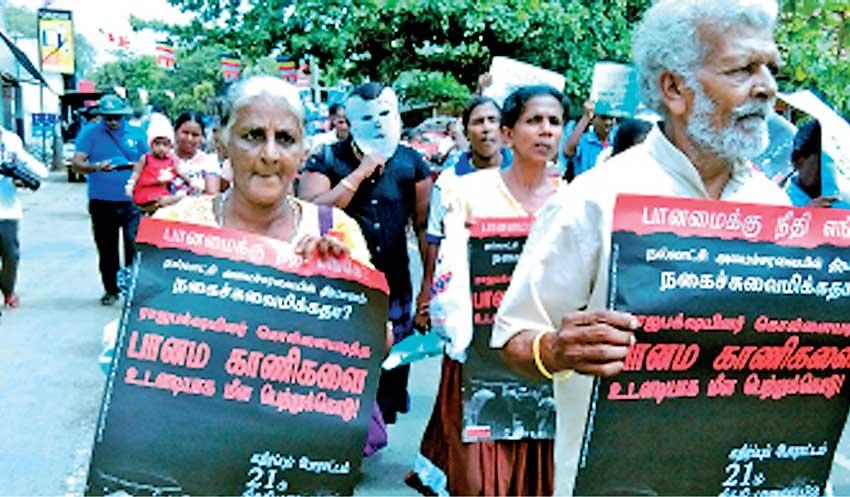21 Jan 2023 - {{hitsCtrl.values.hits}}

 Panama is a remote Sri Lankan village at the southern end of the eastern province in the Ampara district. The slogan often used in land struggles “Land is Life” is true for most people in Panama, like it is for many agricultural and fishing villagers. Land is central to their livelihoods, social – cultural – religious life and cannot be valued purely in monetary terms. Panama is rich with natural resources, especially for agriculture and fishing and also a scenic location, with sea, lagoon, paddy fields and forests, attracting local and foreign tourists.
Panama is a remote Sri Lankan village at the southern end of the eastern province in the Ampara district. The slogan often used in land struggles “Land is Life” is true for most people in Panama, like it is for many agricultural and fishing villagers. Land is central to their livelihoods, social – cultural – religious life and cannot be valued purely in monetary terms. Panama is rich with natural resources, especially for agriculture and fishing and also a scenic location, with sea, lagoon, paddy fields and forests, attracting local and foreign tourists.
Panama residents are not against tourism, but they would like to take leadership in tourism initiatives in their area, rather than be labourers on their own lands and village for external persons, military and companies. External parties usually pocket a major part of the profits and also exploit and destroy the environment and social – cultural life, in which they have no interest other than as means to earning profits. The residents insist that tourism must be done on a small scale, without sudden mega developments (concrete jungles), in a manner that will protect the
environment, which is essential for them to live well and engage in traditional livelihoods such as agriculture and fishing. It is their contention that considering also rains and the sea, they can cultivate around half of the year and focus more on tourism in the other part of the year.
Displacement and challenges of resettling
Many Panama residents were displaced during the war. When they tried to return to their lands after the end of war, they were prevented from doing so due to lands being occupied by the military (including for a Navy run resort) and claimed by the forest department. After determined struggles for many years involving street protests, media, right to information requests, court cases, national and international campaigns and finally a non-violent direct action of physically occupying their lands, some were able to reclaim and resettle in their lands. But despite cabinet and court decisions, many remain displaced to date.
Most recently, residents in Sasthrawela in Panama say that intruders, including relatives of politicians and government officials, have been allowed to occupy lands while they, the traditional historical inhabitants, have been denied access to their lands. Villagers also pointed out unauthorized structures after clearing of forests near the scenic location of “Elephant Rock”.
New protests
It is in this context that villagers started new day and night continuous protests in Sasthrawela in Panama, in two locations. The 1st one had started on 27th December 2022 right next to emerging unauthorized structures after clearing the forest and very close to where they used to live till the 1990s war time displacement. This is close to the beach, beside the popular tourist point “Elephant Rock” and is a remote location, with access being through gravel roads adjoining forests, a Police Special Task Force and an Air Force camp. One protesting lady said “we are very sad and angry to see outsiders occupying our lands while we are forced to be landless, homeless and protesting day and night”. The protest site was beautiful – specially in the night under the stars with a fire, with forest on one side, beach behind and small lake in front. But it also appeared dangerous – with a leopard having been sighted on the 2nd day of the protest within about 100 metres from the protest site, and snakes and herds of wild elephant lurking in the vicinity. The protesters also have to contend with hostile intruders, government officials and police, who have been forcing them to stop the protest and vacate the area. Some lamps supported by batteries helped provide some light during the night and a fire helped keep warmth in the cold night. A slight drizzle didn’t disturb us much when I was there, but some days earlier, there had been heavy rain with water flowing through the temporary hut, causing much discomfort to the protesters.
On 7th January 2023, another protest had started in Sasthrawela, along the main Pottuvil – Panama road, where several families, including those holding land permits, have been denied access to their lands since the end of the war. Many had several acres of land and they had lived there for decades, in basic houses and cultivating multiple crops before being displaced during the war. When they tried to return, the forest department had claimed ownership of the lands.
When I was at this roadside protest site one evening, there was some panic as we spotted an elephant nearby, but thankfully it passed us without causing any trouble. The day after next, there was a snake. In between, government officials and police had visited the site and asked people to stop the protest and remove the temporary hut they had put up. Many involved in the protests said they have land permits while others say they have other state issued documents to prove their connection to the lands dating back several decades. Right next to the 2nd protest site on the main road are lands that 32 families were promised, together with housing by the “Yahapalana” government. They were asked to start building houses and some showed me work on foundations they had started on. But they had to stop as they didn’t receive land and support to build houses as promised.
Challenges and uncertainties
Those I met at the protests didn’t have much faith in government officials, politicians, but expressed willingness to dialogue with government officials. They also seemed to have some faith in the judiciary and were considering judicial interventions, though this would entail a lot of work and results may take a long time and are uncertain. The protesters struggle to engage in livelihoods and attend to family duties while protesting. Despite the many challenges and risks, people at the protests said they are determined to continue until they were allowed to resettle in their lands. They take turns, with some being there in the night and others during day time. They expect all Sri Lankans, especially media, to learn and make known their demands and struggles and support them to live a dignified life on their traditional lands.
09 Jan 2025 47 minute ago
09 Jan 2025 2 hours ago
09 Jan 2025 3 hours ago
09 Jan 2025 3 hours ago
09 Jan 2025 3 hours ago